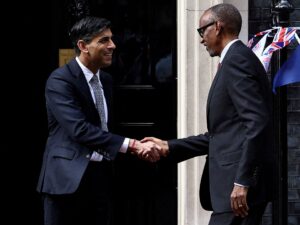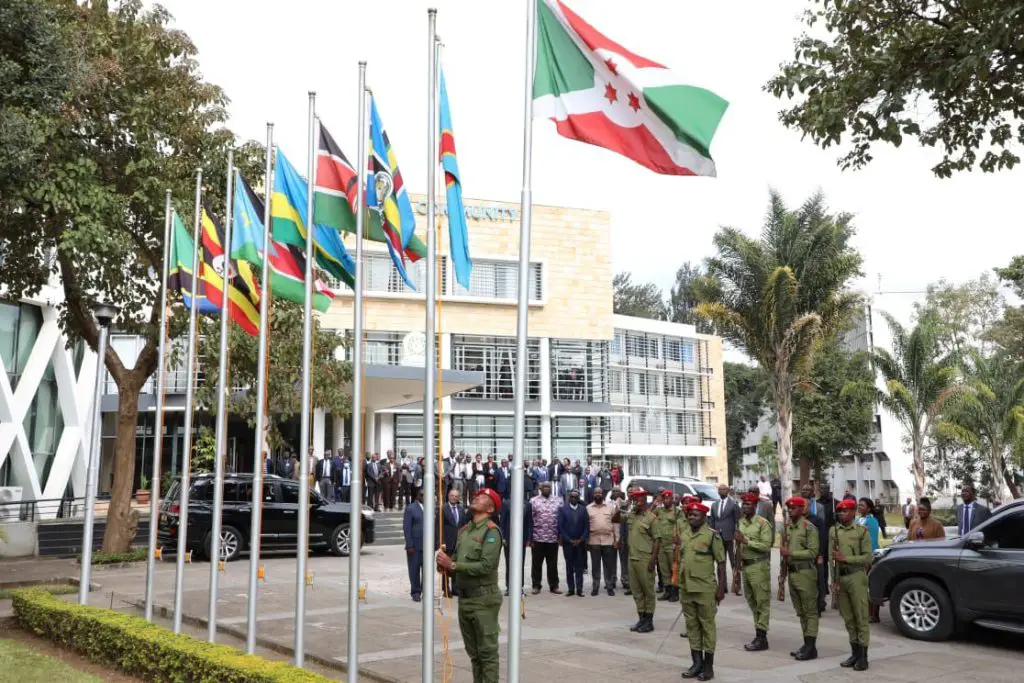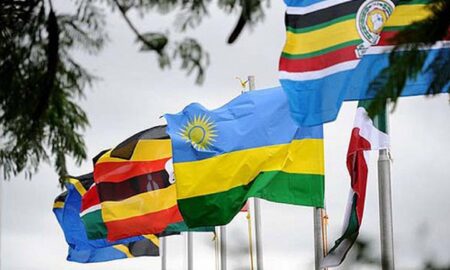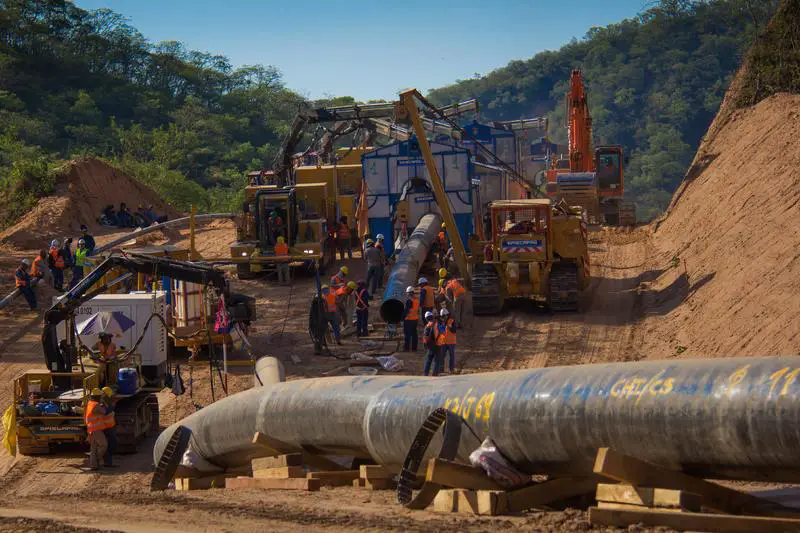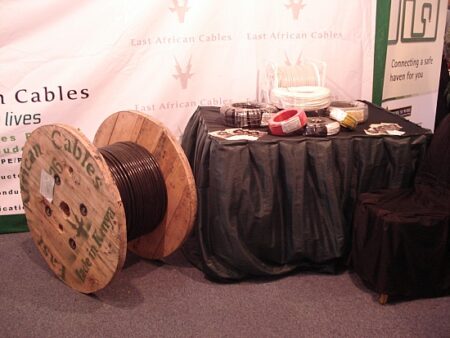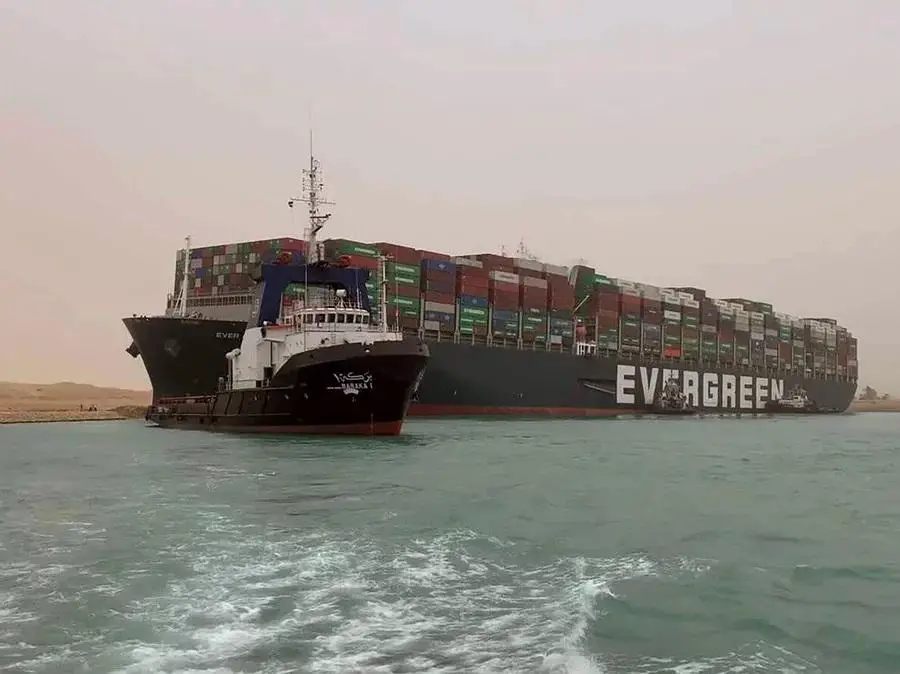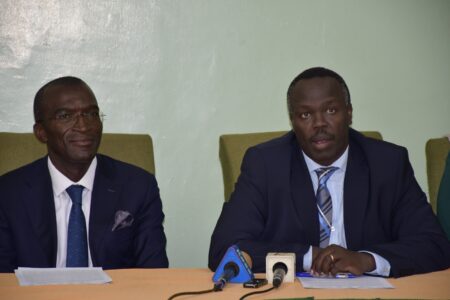- DRC formally joined the EAC by depositing its instruments of ratification on the EAC Treaty’s accession with the bloc’s secretariat
- DRC will eliminate constraints on the free movement of individuals and goods, as well as increase intra-EAC exports which presently total USUS$7.4 billion
- The enlarged membership makes the community larger, with a nearly 50% rise in population, a 22% increase in GDP, and a 79% increase in the territorial area ranging from the Indian to the Atlantic Ocean
On Monday, the Democratic Republic of the Congo (DRC) accomplished the final and most significant step to joining the East African Community (EAC).
At a ceremony conducted at the EAC headquarters in Arusha, Tanzania, the DRC formally joined the EAC by depositing its instruments of ratification on the EAC Treaty’s accession with the bloc’s secretariat.
DRC now has the same rights and benefits as all EAC members to engage in EAC programmes and activities, affirming that it will fulfil all EAC commitments. With a population of over 92 million people, it contains nearly half of the population of EAC member states. It is, therefore, a massive market.
The entrance of the DRC augurs growth in a variety of industries and boosts the population to almost 300 million. In addition, the total gross domestic product (GDP) will increase to US$250 billion.
It is anticipated that the accession of the DRC will eliminate constraints on the free movement of individuals and goods, as well as an increase in intra-EAC exports to the DRC, which presently total US$7.4 billion.
Vice Prime Minister and Minister of Foreign Affairs of the Democratic Republic of the Congo, Christophe Lutundula Apala Pen’ Apala, presented the instrument of ratification to the EAC secretary-general and remarked that his nation’s membership in the EAC was obligated on several fronts, including the economic, cultural, geographical, and historical fronts.
“The admission of the DRC into the bloc fulfils the vision of the establishing heads of the African Union, including Mzee Jomo Kenyatta, Mwalimu Julius Nyerere, Patrice Lumumba and Kwame Nkrumah, all of whom desired a strong, united, and prosperous continent where people could trade and move freely,” Mr Apala Pen’ Apala said.
“Our accession will bolster the bloc’s economic, political, socio-cultural, financial, and military clout.”
The deposit of implements of approval with the EAC secretary-general is the final stage in the admission of a new member, as required in the East African Community Treaty.
“This is the formalisation of an already existing condition.” “We may say that the DRC united their people,” Mr Apala Pen’ Apala explained.
The Democratic Republic of the Congo, also known as the “Giant of Africa,” represents a massive trading potential.
So far, about half of commerce between the EAC and the DRC has been informal, meaning that trade potential has not been maximised.
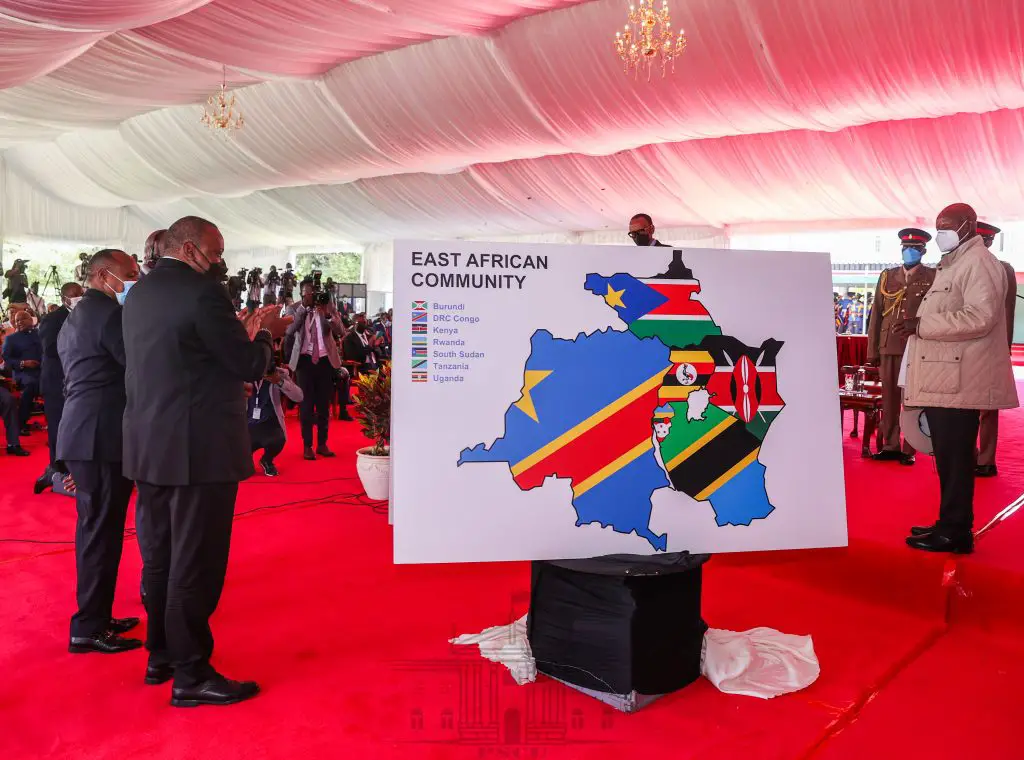
“The enlarged membership makes the community larger, with a nearly 50% rise in population, a 22% increase in GDP, and a 79% increase in the territorial area ranging from the Indian to the Atlantic Ocean.”
The EAC predicts that there will be more freedom of movement of products and services as a result of the reduction of tariffs on goods and the elimination of trading limits among the partner nations.
“Over the past seven years, the average percentage of EAC exports that went to the DRC was 13.5 per cent. However, given that the DRC is now a member of the EAC, it is likely that this will alter,” stated Dr. Mathuki.
“This significant achievement gives several chances for the people of East Africa and the wider East African region to take advantage of opportunities in agriculture, trade, technology, manufacturing, education, natural resources, and other fields of mutual interest,”
Due to the existence of non-tariff barriers, EAC trade with the DRC has mostly been informal, and opportunities are hampered by the high cost of doing business.
With a broader market, manufacturers in the EAC, whether large or small and medium-sized firms (SMEs), will benefit from economies of scale, enhancing their competitiveness and efficiency.
Trade between the EAC and the DRC has traditionally been conducted in a mainly unofficial manner, and opportunities are hampered by the high cost of conducting business as a direct result of the occurrence of non-tariff hindrances.
Manufacturers in the EAC, whether they are major corporations or small and medium-sized businesses, will profit from economies of scale due to a larger market, which will make them increasingly efficient and competitive.
“DRC has the potential for regional commerce, and each EAC partner state is actively vying for a piece of that pie,” said Dr Kevit Desai, the EAC and Regional Development PS.
The Democratic Republic of the Congo (DRC) is landlocked, and its neighbours include Tanzania, Burundi, Rwanda, Uganda, and South Sudan.
The addition of Kinshasa to the community will make it possible to open a corridor from the Indian Ocean to the Atlantic Ocean as well as from North to South, which would result in an increase in the commercial potential of the region.
Equity Bank, Jubilee Insurance, and the Kenya Commercial Bank, which has begun a strategy for entering the country by acquiring an existing lender, are examples of Kenyan companies that have expressed interest in expanding their operations into the DRC.
“The fact that Equity bank has holdings in South Sudan, DRC, Uganda, South Sudan, Rwanda, and Tanzania, and that Nairobi is the logistics hub for DRC’s needs for health, education, and trade put us in the right place at the right time,” said Equity Group CEO Dr James Mwangi.
In order to cut trade time and costs, the DRC must also integrate the EAC’s trade infrastructure, intermodal connections, trade systems and One-Stop Border Posts.
The inclusion of the DRC into the EAC will harmonise the region’s monetary and fiscal policies, enabling
easier standardisation of tax regimes, increase cross-border trade and promote free movement of people and labour.
The DRC imports more commodities from China than the EAC and her accession to the regional bloc is expected to alter the situation.
Raw cane sugar (US$49.2 million), Non-alcoholic beverages (US$55.2 million), meal preparations (US$37.3 million), and sweet biscuits (US$31 million) were the most popular goods in DRC.
According to an East African Business Council study paper titled, ‘The Opportunities for Trade in the DRC, a Perspective from East Africa 2019,’ the DRC imported products worth US$235.7 million in 2019, with China accounting for 54.6 per cent (US$128.9 million).
Worn apparel and clothing accessories (US$37.2 million), plain woven cotton textiles (US$23.9 million), woven yarn fabrics (US$9.6 million), and men’s or boy’s pants (US$7.9 million) were the most in-demand in this area, which the EAC must now position itself to offer.
Following its admission, the DRC must also nominate nine members to the East African Legislative Assembly by the end of the year.
“The earliest the DRC’s members of Parliament would be able to join the East African Legislative Assembly will be in December 2022, when new EALA members will be elected,” stated EALA MP Aden Abdikadir.

